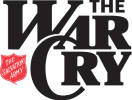A Bright Yellow Taxi
Major Ed Forster shares another installment of “Others,” stories highlighting actual events that occurred during more than four decades of officership.
The bright yellow taxi wended its way along the ridge that encircled a government sponsored housing project. It stopped at a grocery store on the very fringe of the multi-family dwellings.
A 14-year-old, red-haired, freckled-faced boy, who had been waiting anxiously on the front stoop of the store, scurried quickly into the back seat of the cab and told the driver his desired destination.
The cab driver began to laugh – then he stopped short. The boy was serious. His face said it all. The driver cleared his throat and said, “Going that far will cost you nearly fifty dollars, kid. Maybe you should think about taking a bus.”
The boy dug into the tight-fitting pocket of his jeans and pulled out a wrinkled white envelope with formal green printing. He took out five ten-dollar bills, three singles and some change. He showed it all to the driver. “I worked hard for this money. Now, will you take me where I need to go?”
“Okay, kid, but are you sure it’s alright with your mother?”
“Sure. I’m going to visit one of my mother’s friends in the city. I earned this money myself. It took me two weeks to do it.”
The taxi drove him to his destination. Two weeks’ pay was spent on a 45-minute cab ride.
Red needed love. There were serious problems in his family. He believed that a friend of his mother’s, who had moved away, would care for him. He needed someone to listen to his needs and to understand his confusion.
In essence, Red needed what many teens need today. He needed a “bridge over troubled waters.” He needed a bridge to span a gulf of misinformation, or no information at all.
Our part was to take The Salvation Army van and retrieve Red after his mother called us in desperation. Neither she, nor her friend, had any money to transport him back home. While his mother’s friend was concerned about him, she couldn’t take care of him.
Red, along with a dozen other teenagers with similar needs, got help locally in our “Bridging the Gap” interactive counseling program. They met for eight weeks each Sunday morning and Tuesday evening to discuss what it means to grow up making right decisions. Each was given information on a variety of subjects including self-identity, career guidance, personal maturity and the challenges of puberty.
When the group traveled out into to the country to visit a family living in a log home, they were amazed to discover it was heated totally by two wood stoves. Many left there assuring each other they would someday build a house like that one.
One night, the group went to talk with a policeman who patrolled the downtown area in a police cruiser. They listened attentively as calls came in over his interactive radio, informing him, and them, of events being attended to by the local police.
The patrolman patiently answered each question the teens asked, until he suddenly made a mad dash for his car. A call had come for him to go and break-up a brawl at a local tavern. All the teens wanted to go and help. From that moment on, many were determined to prepare themselves to become involved in a form of police work in the future.
The group also learned how and where to vote; how to fill out an employment form; what diseases were most prevalent among teens; how to plan for marriage and somethings about the responsibility involved in taking care of a family.
Gaps were bridged over many of the teens’ fears. A lot of their fears were resolved through pointed questions and honest answers.
A wide variety of films and videos were used to help the teens make their own decisions. Additionally, several booklets and brochures addressing teen issues were given to each participant.
Following one of the Tuesday night sessions, a girl named Lisa reached her hand across the table and touched one of the leader’s hands, and said, “Thanks. Every kid should get a chance to talk about what they need to know as they grow up.”
Lisa’s greatest fear had been divorce. After attending the Bridging the Gap classes, she felt she had a better understanding about how to approach the subject of marriage, and when it would be most appropriate to consider it.
Jack had resolved his questions about finding a job, and Karen had a better perspective on the kind of job she would really enjoy. Mary had resolved not to drink alcohol or do drugs because she could see how it had affected the people around her.
While lots of questions remained for these teens, they learned that they had friends at The Salvation Army who they could call on to help them bridge the gap between adolescence and adult life.







